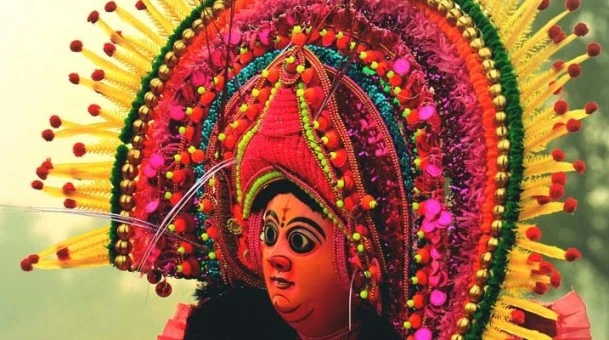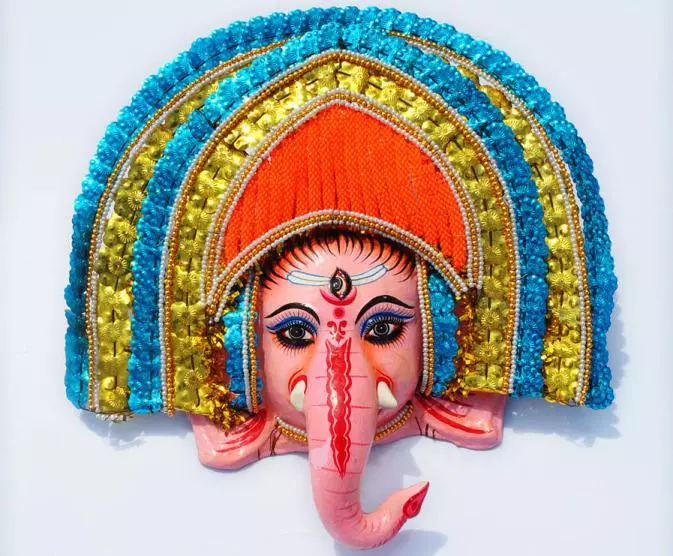


One of the traditional artforms of Bengal is Puruliya’s Chhau mask. It is a tribal mask associated with the ancient dance form ‘Chhau’. Chhau dance originated in the soldiers’ barracks or ‘Chhauni’ when Bengal, Bihar and Orissa was a joint military regiment. In the barracks, the dancers would don the elaborate costumes with the colourful, hand-painted and beautifully decorated masks and head-dresses. Seraikella Chhau, Mayurbhanj Chhau and Purulia Chhau are the different forms of Chhau dance that are still very popular and performed during specific tribal festivals in West Bengal. Puruliya district specifically the village of Charida is the hometown of the vibrant and intricately designed chhau masks. The masks are made from clay and paper pulp. Large in size but light-weight, the masks are noted for the larger than life facial features and bright colours. The mask making process begins with rough clay moulds in the shape of a face which are sun-dried. They are then layered with powdered ash, multiple layers of paper moistened with gum. After the layers dry and the shape hardens, cloth or ‘bele mati’ clay earth layer is put on top of it. It is then polished with wood to carve out the features on the face of the mask. It is then again left to bake in the sun. Once dry, a coat of white or yellow paint is applied. Finally, the facial expressions are painted on the surface with different colours. The masks depict different characters participating in the Chhau dance. Dark yellow and orange face colours symbolise the heavenly deities while the antagonists are depicted in dark green or black. The masks are decorated with large expressive eyes, thick moustaches and shiny headdresses made of zari, foil, feathers, beads, plastic and paper flowers and thin bamboo sticks. The elaborate headgear and the vibrancy of the Chhau masks add to the aesthetic charm of this vintage craft. Chhau mask craftsmanship is handed down generations and both male and female members of the family lend their hand in the art. Even the children of the artist families take part in the mask making process. Chhau craftsmanship is no longer limited to the confines of Charida but is gaining popularity both nationally as well as internationally thanks to the growing interest in tribal dance-forms generated by film-makers showcasing Chhau dance in movies and documentaries along with the government’s initiative to send artists’ delegation abroad to spread awareness about the traditional artforms.